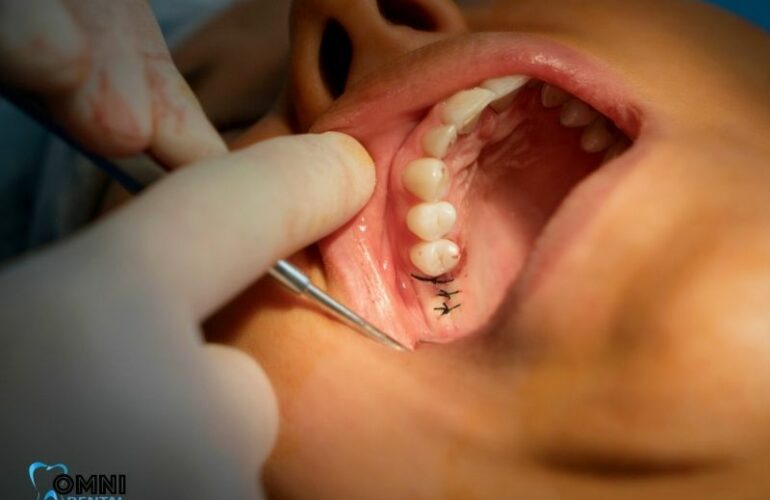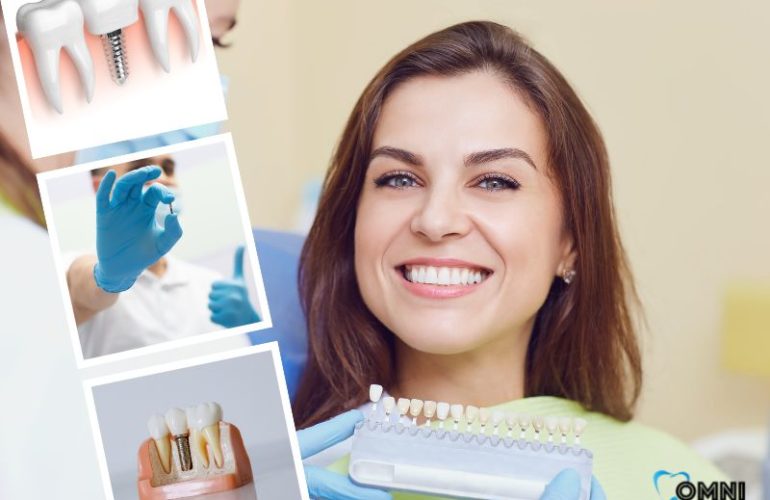Invisalign and dental crowns are two popular options for improving the appearance and function of your teeth. Many patients in the Chicago area are turning to Invisalign as a more discreet and comfortable alternative to traditional braces. Invisalign is a series of clear, custom-made aligners that gradually move the teeth into their desired position. On the other hand, Crowns are caps placed over a damaged or decayed tooth to restore its shape, size, and strength. This article will explore the compatibility of Invisalign and dental crowns and what you need to know when considering these options.
Invisalign and Crowns: An Overview
What are Invisalign and Dental Crowns?
Invisalign is a straightforward, removable orthodontic treatment that uses a series of custom-made aligners to move the teeth into their desired position gradually. Invisalign is a popular alternative to traditional metal braces because the aligners are virtually invisible, comfortable to wear, and can be removed for eating and brushing.
On the other hand, dental crowns are caps placed over a damaged or decayed tooth to restore its shape, size, and strength. Crowns are typically made of porcelain, metal, or a combination of both and are designed to match the color and shape of the natural tooth.
Can Invisalign be used with Dental Crowns?
Invisalign can be used with existing dental crowns, but the treatment process may differ slightly from those without crowns. Invisalign aligners are designed to move natural teeth but cannot move a dental crown. Therefore, if a patient has a dental crown on a tooth that needs to be moved, the crown will not proceed with the aligner. In these cases, the dentist may need to remove the crown temporarily during the Invisalign treatment and replace it once the teeth have been correctly aligned.
The Process of Getting Invisalign with Existing Dental Crowns
Getting Invisalign with existing dental crowns begins with a consultation with an Invisalign-trained dentist. During the consultation, the dentist will evaluate the patient’s teeth, including any existing dental crowns, and determine if Invisalign is a suitable option. If Invisalign is a good fit, the dentist will take impressions, x-rays, and photographs of the patient’s teeth. These images create a customized treatment plan and a series of clear aligners that will gradually move the teeth into their desired position.
The natural teeth will move as the patient wears the aligners, but the dental crowns will not. The dentist may need to temporarily remove and replace the crowns during the treatment process to ensure they fit correctly once the teeth have been properly aligned.
Understanding the Compatibility of Invisalign and Dental Crowns
Comparing Invisalign and Traditional Braces for Patients with Crowns
Invisalign can be more suitable for patients with existing dental crowns than traditional braces. Traditional braces use metal brackets and wires to move the teeth, and these can cause damage to existing dental crowns. Conversely, Invisalign uses clear, custom-made aligners that are gentler on existing dental work. Additionally, traditional braces can be uncomfortable and unsightly, while Invisalign aligners are virtually invisible and can be removed for eating and brushing.
The Role of the Dentist in Invisalign Treatment with Crowns
The dentist’s role in Invisalign treatment with crowns is to ensure that the treatment plan is tailored to the patient’s specific needs. The dentist will evaluate the patient’s teeth, including any existing dental crowns, to determine if Invisalign is a suitable option. The dentist will also need to temporarily remove and replace any dental crowns during the treatment process to ensure they fit properly once the teeth have been correctly aligned.
Common Misconceptions about Invisalign and Dental Crowns
One common misconception about Invisalign and dental crowns is that they cannot be used together. However, as previously mentioned, Invisalign can be used with existing dental crowns, but the treatment process may be slightly different. Another misconception is that Invisalign is only for minor adjustments to the teeth. However, Invisalign can be used to treat a wide range of orthodontic issues, including severe crowding or bite problems.
Tips for Maintaining Dental Crowns During Invisalign Treatment
To maintain dental crowns during Invisalign treatment, it is essential to follow the instructions provided by the dentist. This may include regular dental checkups to ensure that the crowns fit correctly and make necessary adjustments. Additionally, it’s essential to maintain good oral hygiene.
So, can you get Invisalign with a crown?
The answer is yes, but the crown may have to be temporarily removed during treatment. In addition, it’s essential to consult with your dentist about any crowns you may have before starting Invisalign, as this could affect which type of aligners are right for you. With proper care and maintenance, Invisalign can successfully straighten teeth with crowns.
Invisalign Treatment in Arlington Heights
If you have existing dental crowns and are considering Invisalign, it can be an excellent option for achieving the smile of your dreams. At our office in Arlington Heights, we can help determine if you’re a candidate for Invisalign treatment with crowns, evaluate your oral health to ensure that all necessary adjustments can be made during treatment, and provide tips on how to maintain good oral hygiene throughout the process. Contact us today to learn more about how we can help you achieve beautiful results with Invisalign.






